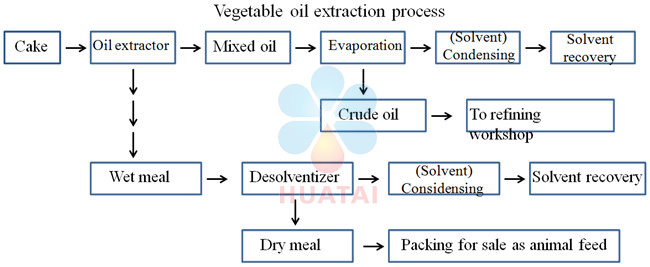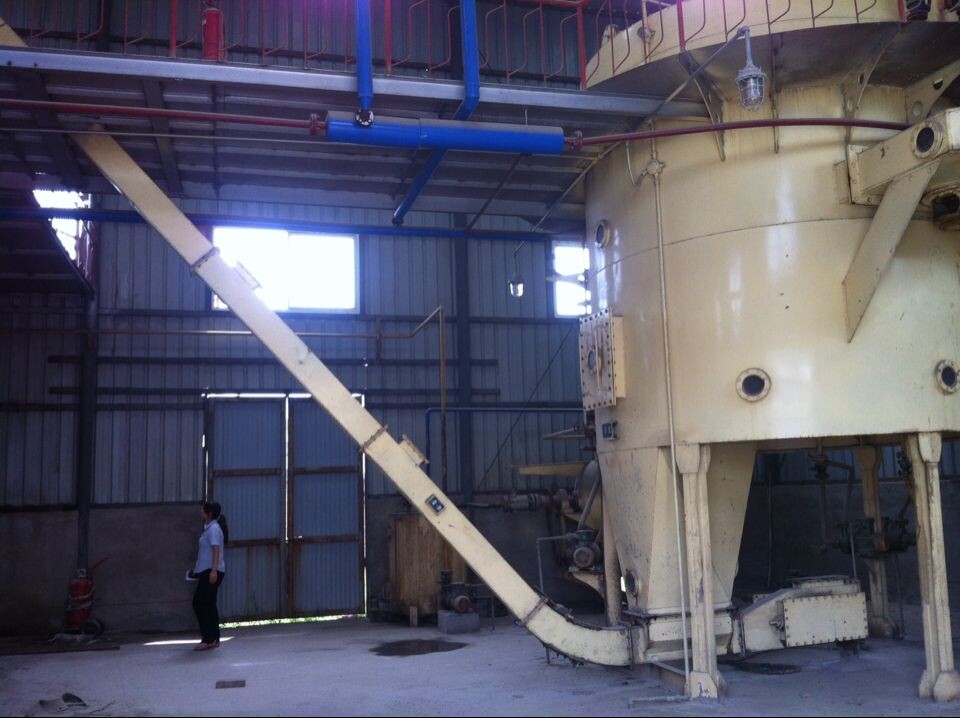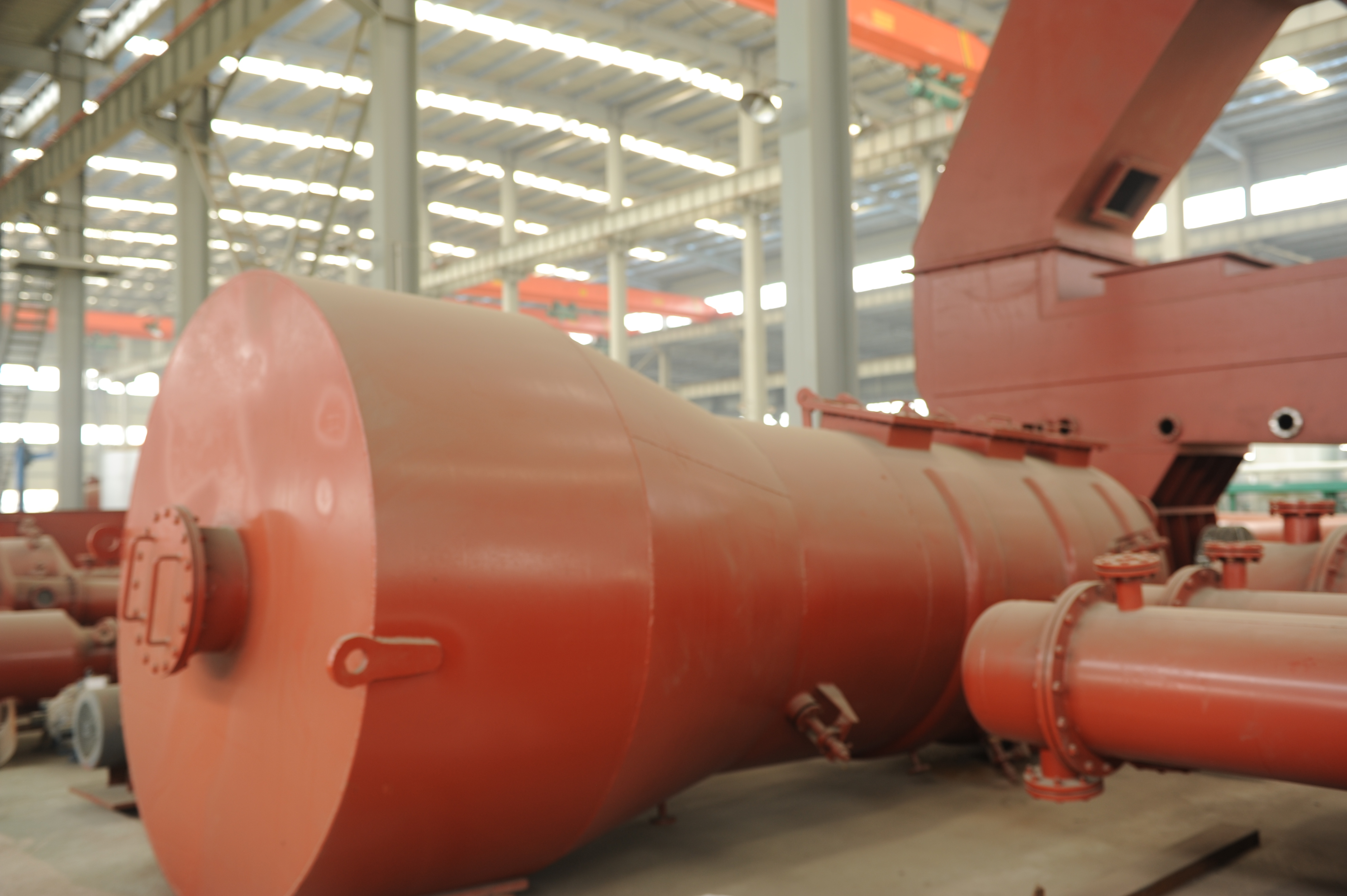Generally, oils with high oil content, such as peanuts, still contain a large amount of oil in the peanut cake obtained in the pretreatment and pressing sections. After processing in the extraction stage, the oil content in the cake can be less than 1%. Or oil such as soybeans with low oil content can be directly leached into the section after pretreatment and the oil rate will be increased.
The oil extraction section consists of a total of four processes: oil extraction, wet dehydration drying, evaporation and stripping of mixed oil, and solvent vapor condensation and cooling.
1. Oil extraction
(1) Process flow: material embryo (or pre-sweet cake) → storage box → closed auger → (solvent →) extractor (→ wet rakeextraction) → mixed oil
The raw material or pre-squeezed cake formed after the pretreatment of the oil is sent to the extractor by the conveying equipment and is leached by the solvent to obtain the concentrated oil and the wet cake, respectively.
(2) Extraction equipment: The important equipment for the extraction system is the extractor, which takes many forms.
Batch extractor – extraction tank; continuous extractor – rotocel extractor, loop extractor, box towline extractor and so on.
 rotocel extractor
rotocel extractor2. Wet dehydration drying
(1) Process flow: wet cake → scraper conveyor → steaming off (mixed steam) → dry rake (cooling) → warehouse;
→ Solvent vapor → condensation, recovery;
The crucible discharged from the extractor contains 25% to 35% of solvent. In order to recover the solvent and obtain a crucible of good quality, it can be heated by steam to evaporate the solvent. The finished product is taken into the warehouse and the solvent vapors obtained enter the condensation recovery system.
(2) Desolvation and drying equipment The desolvation and drying of the extraction cake of the pre-pressed cake shall be carried out by using high material layer to steam off, and the soybeans shall be dewatered and dried by D.T.
3. Evaporation and stripping of mixed oil
(1) Process: mixed oil filter→mixed oil tank→first evaporator→second evaporator→stripper→solvent extraction oil;
The mixed oil pumped from the extractor (a solution of grease and solvent) must be processed to separate the oil from the solvent. The separation method is to “pretreat” the mixed oil first to remove the solid mash and the gelatinous substance, and then use the boiling point of the oil and the solvent to be different. First, the mixed oil is heated and evaporated to vaporize most of the solvent. Separated. Then, using the difference in the volatility of the oil and the solvent, the concentrated oil is subjected to steam distillation (i.e., stripping), and the remaining solvent in the hair oil is distilled off to obtain a extraction oil with a very low solvent content.
(2) Evaporation equipment for mixed oil – long tube evaporator
The evaporation of the mixed oil is a process in which the oil is hardly volatilized and the solvent has a low boiling point and is easily volatilized. The solvent vaporizes most of the solvent by heating, thereby greatly increasing the concentration of the oil in the mixed oil. In the selection of evaporation equipment, long-tube evaporators (also called “film-lift evaporators”) are used in oil plants. Its characteristic is that the heating pipe is long, the mixed oil enters the heating pipe from the lower part after being warmed up, boils quickly, and generates a large amount of steam bubbles and rises rapidly. The mixed oil is also driven by the rising vapor bubbles and pulled as a layer of liquid film rises along the tube wall, and the solvent continues to evaporate during this process. Since the heat transfer is performed in the thin film state, the evaporation efficiency is high.
(3) Stripping equipment for mixing oil – stripping tower
By evaporation, the concentration of the blended oil is greatly increased. However, the boiling point of the solvent also increases. Regardless of whether atmospheric evaporation or evaporation under reduced pressure is continued, it is extremely difficult to substantially remove the remaining solvent in the mixed oil. Only by stripping can the residual solvent in the mixed oil be substantially removed.
4 solvent vapor condensation and cooling
Process flow
The solvent vapor from the first and second evaporators does not contain water, and directly flows into the circulating solvent tank after being cooled by the cold exchanger; the mixed vapor from the stripping tower and the steaming dryer enters the condenser, and the condensed solvent The water mixture flows into the water separator to divide the water. The separated solvent flows into the circulating solvent tank, and the water enters the water seal tank and is discharged into the sewer.
If the water discharged from the water separator contains a solvent, it enters the cooking tank. After the micro-solvent in the water is distilled off, the condensate flows out of the condenser through the condenser and the waste water enters the water-sealing tank.
Under normal circumstances, the waste water discharged from the water separator is treated in a water-sealing tank, but when there is a large amount of crumbs in the water, a part of the waste water that is in the emulsified state should be sent to the waste water cooking tank and heated to above 92°C with steam. However, it does not exceed 98°C and the solvent contained therein is evaporated and then recovered by the condenser.




